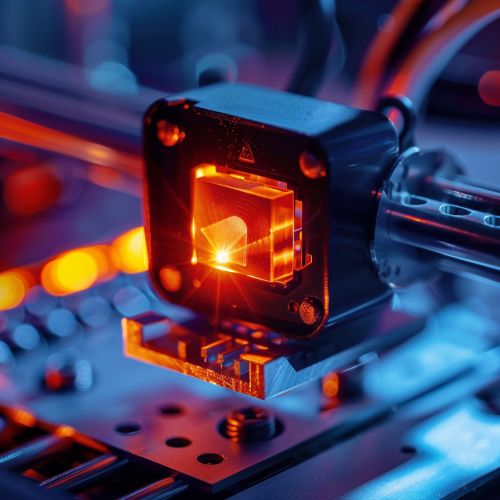Quantum infrared sensors
Introduction
Quantum infrared sensors are advanced devices that utilize quantum mechanical principles to detect infrared (IR) radiation. These sensors are pivotal in various applications, including military, medical, industrial, and scientific fields. By leveraging phenomena such as quantum tunneling, quantum dots, and quantum wells, these sensors can achieve superior sensitivity and specificity compared to classical IR sensors.
Principles of Operation
Quantum infrared sensors operate based on several quantum mechanical principles:
Quantum Tunneling
Quantum tunneling is a phenomenon where particles pass through a potential barrier that they classically shouldn't be able to pass. In quantum infrared sensors, this principle is used to detect IR radiation by allowing electrons to tunnel through a barrier when IR photons are absorbed, creating a measurable current.
Quantum Dots
Quantum dots are semiconductor particles only a few nanometers in size. They have discrete energy levels due to quantum confinement effects. When these dots absorb IR radiation, they can re-emit it at different wavelengths, which can be detected and measured.
Quantum Wells
Quantum wells are thin layers of semiconductor material where charge carriers are confined in one dimension. This confinement leads to discrete energy levels and enhanced interaction with IR radiation. When IR photons are absorbed, electrons transition between these energy levels, which can be detected as changes in electrical properties.


Types of Quantum Infrared Sensors
Quantum infrared sensors can be categorized based on the quantum phenomena they utilize:
Quantum Well Infrared Photodetectors (QWIPs)
QWIPs use quantum wells to detect IR radiation. They are particularly effective in the mid- to long-wavelength infrared range. QWIPs are known for their high sensitivity and ability to operate at higher temperatures compared to other IR sensors.
Quantum Dot Infrared Photodetectors (QDIPs)
QDIPs utilize quantum dots to detect IR radiation. These sensors can be tuned to specific wavelengths by adjusting the size and composition of the quantum dots. QDIPs offer high sensitivity and can be integrated into various devices due to their small size.
Superconducting Tunnel Junctions (STJs)
STJs leverage quantum tunneling in superconducting materials to detect IR radiation. These sensors are extremely sensitive and can detect single photons. However, they require very low operating temperatures, often near absolute zero.
Applications
Quantum infrared sensors have a wide range of applications due to their high sensitivity and specificity:
Military and Defense
In the military, quantum infrared sensors are used in night vision devices, missile guidance systems, and surveillance equipment. Their ability to detect minute amounts of IR radiation makes them invaluable for these applications.
Medical Imaging
In the medical field, these sensors are used in imaging techniques such as thermography, which detects heat patterns in the body. This can be useful for diagnosing conditions like breast cancer or monitoring blood flow.
Industrial Inspection
Quantum infrared sensors are used in industrial settings for non-destructive testing and inspection. They can detect defects in materials, monitor thermal processes, and ensure the quality of products.
Scientific Research
In scientific research, quantum infrared sensors are used in astronomy to detect IR radiation from celestial objects. They are also used in spectroscopy to study the properties of materials at the quantum level.
Advantages and Challenges
Quantum infrared sensors offer several advantages over classical IR sensors:
Advantages
- **High Sensitivity:** Quantum effects allow these sensors to detect very low levels of IR radiation.
- **Specificity:** They can be tuned to specific wavelengths, making them useful for targeted applications.
- **Miniaturization:** Quantum dots and wells enable the creation of very small sensors that can be integrated into various devices.
Challenges
- **Complexity:** The fabrication and operation of these sensors require advanced technology and expertise.
- **Cost:** Due to their complexity, quantum infrared sensors are often more expensive than classical sensors.
- **Temperature Sensitivity:** Some types, like STJs, require extremely low operating temperatures, which can be a limitation for certain applications.
Future Prospects
The field of quantum infrared sensors is rapidly evolving, with ongoing research aimed at overcoming current limitations and expanding their applications. Advances in nanotechnology and materials science are expected to lead to more efficient and cost-effective sensors. Additionally, the integration of quantum infrared sensors with other technologies, such as artificial intelligence and machine learning, holds promise for creating smarter and more versatile sensing systems.
